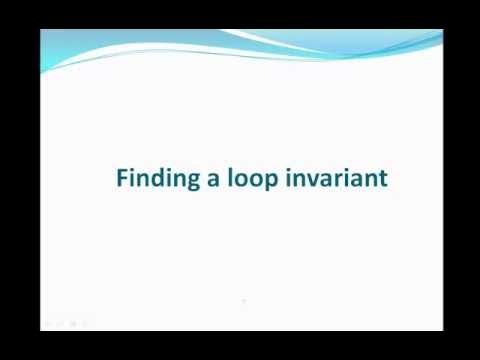Math's Fundamental Flaw
Summary
TLDR本文探讨了数学中的不确定性和不可判定性问题,从哥德尔不完备性定理和图灵机的概念出发,解释了为何存在无法证明的真命题。通过康威的生命游戏、量子物理和王瓷砖等例子,展示了不可判定性在不同领域的普遍存在。同时,介绍了数学家如希尔伯特、康托尔、罗素、哥德尔和图灵的贡献,以及他们的工作如何影响了现代计算机科学的诞生和发展。视频由Brilliant赞助,Brilliant是一个提供深入数学、物理和计算机科学主题的互动课程和测验的网站。
Takeaways
- 🧩 数学中存在无法证明的真实陈述,这意味着我们永远无法确定地知道一切。
- 🎲 双生素数猜想是一个可能永远无法证明或证伪的数学猜想,它关于存在无限多对双生素数。
- 🕹 Conway的生命游戏展示了即使规则简单,系统也能产生复杂多变的行为,其模式的最终命运是不可判定的。
- 🔢 Georg Cantor的集合论引入了可数无限和不可数无限的概念,改变了对无穷大的传统理解。
- 📚 David Hilbert的23个问题中的前三个问题关注数学的完备性、一致性和可判定性,但哥德尔的不完备性定理和图灵的停机问题表明数学是既不一致也不可判定的。
- 🤔 哥德尔的不完备性定理表明任何包含基本算术的数学系统都将包含无法证明的真实陈述。
- 🔍 哥德尔的证明利用了自引用和哥德尔数来展示数学系统内部的某些陈述是不可证明的。
- 🚫 图灵的停机问题证明了不存在一种算法能够确定任意图灵机在给定输入下是否会停止运行,这意味着数学是不可判定的。
- 🔗 许多不同的系统,包括物理系统、量子力学、航空票务系统等,都存在不可判定的问题。
- 💡 尽管数学存在不确定性,但对这些问题的思考推动了计算机科学的诞生和发展,影响了现代世界。
Q & A
数学中存在无法确定的陈述意味着什么?
-这意味着在数学系统中,有些真实陈述可能永远无法被证明或证伪。这表明数学知识的边界并不是完全确定的,总有一些问题可能超出了我们证明的能力。
双生素数猜想是什么?
-双生素数猜想是指存在无限多对相差2的素数对,例如(11, 13)和(17, 19)。尽管素数在数轴上出现的频率逐渐减少,但双生素数猜想认为双生素数对是无限的。
康威的《生命游戏》如何展示了数学的不确定性?
-《生命游戏》是一个简单的细胞自动机,通过两个规则在无限大的网格上演化。尽管规则简单,它却能产生复杂的行为模式。游戏的某些模式是不可判定的,意味着不存在一个算法能在有限时间内确定一个模式的最终命运,这展示了数学中的不确定性。
康托尔的对角线论证是如何证明实数比自然数更多的?
-康托尔的对角线论证通过构造一个新的实数,该实数与列表中的每个实数在至少一个数字上不同,从而证明了实数集合的基数大于自然数集合的基数,即使两者都是无限的。
直觉主义者对数学的看法是什么?
-直觉主义者认为数学是纯粹人类心智的创造,他们反对康托尔的集合论,认为数学应该是确定无疑的,并且反对接受无限集合的概念。
罗素的悖论是什么?
-罗素的悖论是通过考虑一个自引用的集合——即包含所有不包含自己的集合的集合——来展示的。这个悖论展示了如果一个集合可以包含自己,那么就会出现逻辑上的矛盾。
图灵的停机问题是什么?
-图灵的停机问题是指在没有实际运行程序的情况下,判断一个程序是否会在给定输入上无限循环或者最终停止的问题。这个问题是不可判定的,意味着不存在一个算法能够对所有可能的程序和输入给出正确答案。
哥德尔不完备性定理对数学意味着什么?
-哥德尔不完备性定理表明,任何足够强大的数学系统都不可能同时是完备的(每个真实陈述都有证明)和一致的(没有矛盾)。这意味着在数学中,总有一些真实的陈述无法被证明。
为什么现代计算机可以追溯到图灵机的概念?
-图灵机是一个抽象的计算模型,它能够模拟任何算法的计算过程。现代计算机的设计基于图灵完备性的概念,即任何图灵机能够执行的计算,现代计算机也能够执行,这使得计算机能够执行广泛的计算任务。
希尔伯特的23个问题是什么?
-希尔伯特的23个问题是大卫·希尔伯特在1900年提出的一系列未解决的数学问题,这些问题被认为对20世纪的数学发展有深远的影响。
为什么说数学的底端有一个洞?
-这个比喻指的是数学系统中存在一些无法确定的真理,即存在一些真实陈述无法被证明或证伪。这个“洞”表明了数学知识的局限性和不确定性。
哥德尔的不完全性定理对数学家有什么影响?
-哥德尔的不完全性定理对数学家产生了深远的影响,它改变了数学家对数学系统完备性和一致性的看法,也促进了对数学基础和逻辑极限的进一步探索。
Outlines

هذا القسم متوفر فقط للمشتركين. يرجى الترقية للوصول إلى هذه الميزة.
قم بالترقية الآنMindmap

هذا القسم متوفر فقط للمشتركين. يرجى الترقية للوصول إلى هذه الميزة.
قم بالترقية الآنKeywords

هذا القسم متوفر فقط للمشتركين. يرجى الترقية للوصول إلى هذه الميزة.
قم بالترقية الآنHighlights

هذا القسم متوفر فقط للمشتركين. يرجى الترقية للوصول إلى هذه الميزة.
قم بالترقية الآنTranscripts

هذا القسم متوفر فقط للمشتركين. يرجى الترقية للوصول إلى هذه الميزة.
قم بالترقية الآنتصفح المزيد من مقاطع الفيديو ذات الصلة

5. From Panic to Suffering

CCIR - Quantum Physics: Information, Foundations And Gravity - Lecture Session #2

Ask physicist Carlo Rovelli - black holes, white holes, and more

CCIR - Quantum Physics: Information, Foundations And Gravity - Lecture Session #1

Webinar: How to Be an AI Product Manager by Facebook AI Product Leader, Natalia Burina

Loop Invariants - Principles of Imperative Computation (Carnegie Mellon University)
5.0 / 5 (0 votes)
